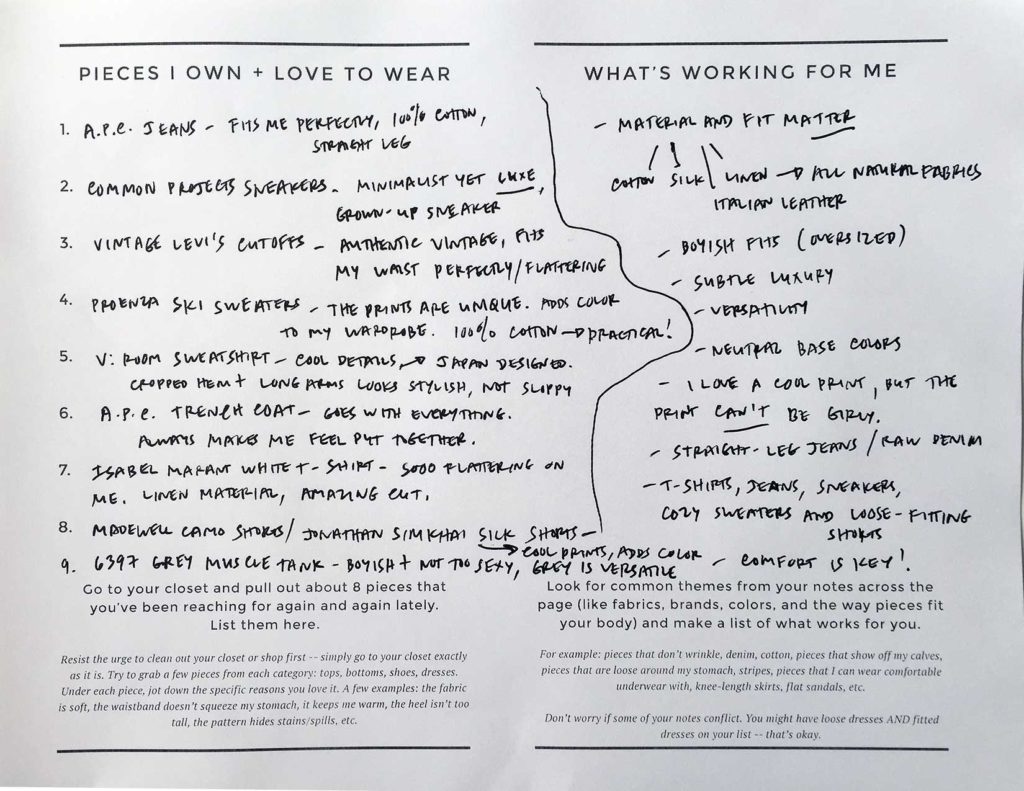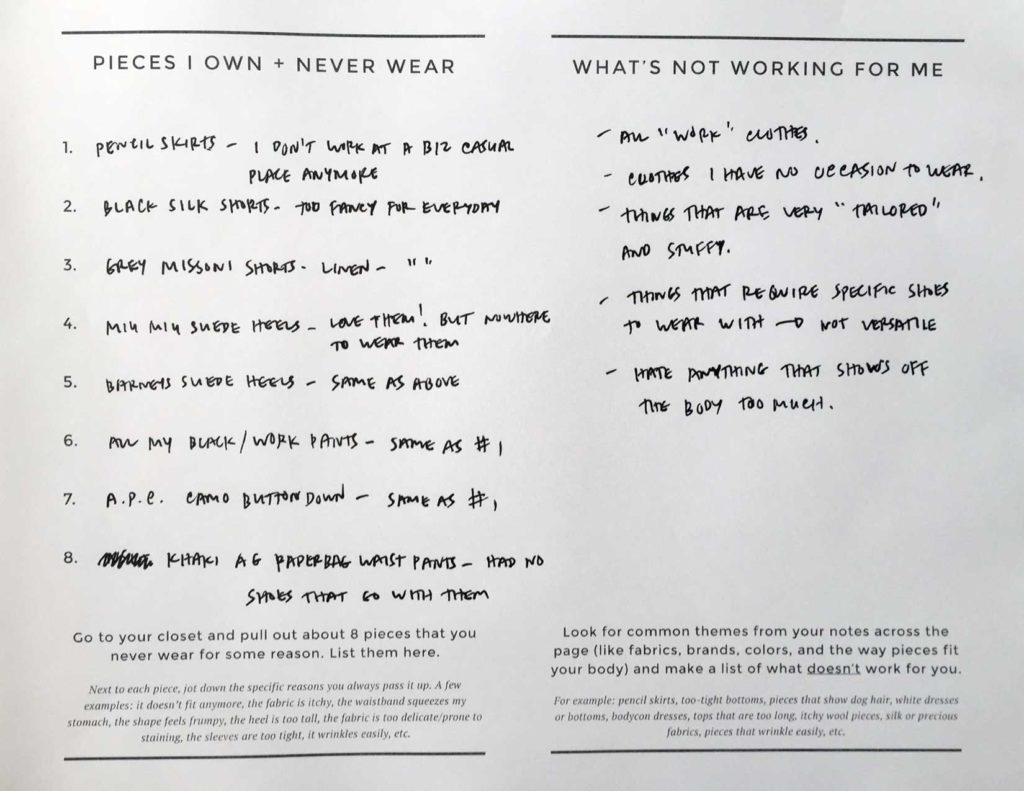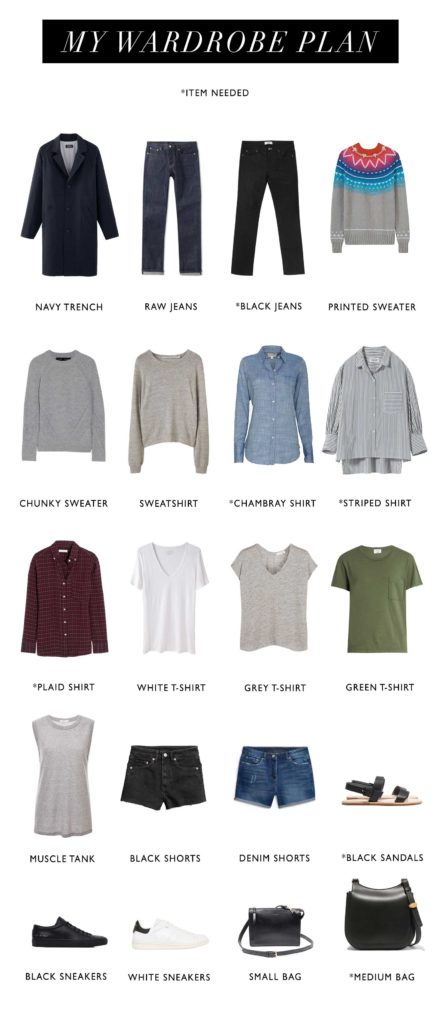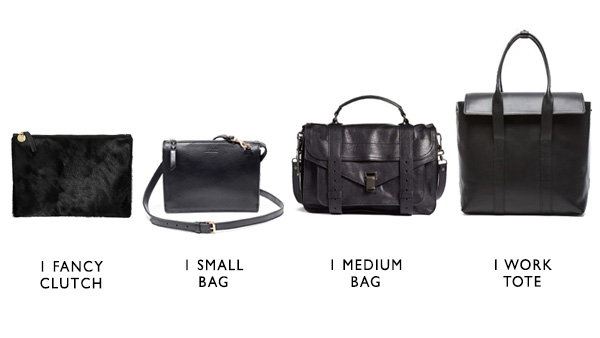6 Steps To Curating A Wardrobe You Love Without Overspending

Instead of shopping for sweaters and boots I’m on the hunt for a pair of sandals. For next summer. What the what?
Here’s the thing: I have enough sweaters, and I don’t think I need any boots. I’m what you’d call a Season-less Shopper, which means I shop for items that I want no matter if it’s the right season. For example, this summer, I looked for a pair of black sandals, but I never found any. So instead of settling for a “good enough” pair, I bought nothing. I survived the summer without the sandals — and so the search continues.
It’s hard not to shop.
Everywhere I look, I’m being told that this thing and that are fall’s “must haves,” or that these are the six items “all stylish girls wear.” Stores and magazines are relentless about getting me to spend money on clothes I’m supposed to wear for only three months and then toss. Some of these marketing campaigns are genius, and I admire their creativity. But I don’t necessarily have to buy into them.
Still, the standard shopping cycle seems to be buying 5-10 pieces per season, which equals 20-40 pieces of clothing bought a year. There’s nothing inherently wrong with that. Some people truly love clothes. But what if you’re tired of wading through all the clothes you have? Or you feel like you’re constantly buying stuff you don’t like? Or your wardrobe doesn’t make you feel like the best version of you? (Because it totally should.)
If that’s you, then I have an idea: approach your wardrobe like an actual, ongoing project. Something that’s assessed, has requirements, and is maintained. Something that’s planned. The core principle is shopping proactively versus reactively. I think you all can relate when I talk about reactive shopping. Like when you get a wedding invitation in the mail and your first thought is, “Oh, crap, I gotta go buy a new dress.” Or when you have a job interview coming up, and you realize you don’t have a professional-looking tote bag (Hello, that was me). It’s those “Oh, crap” moments that usually result in a pile of clothes you don’t wear.
Shopping with a big-picture plan has its benefits:
You buy less. Having a list of items ahead of time will help keep your shopping focused. And as the years go on, I buy less and less every year because I’ve found the “right” items.
You stop shopping in a panic. So, your friend’s wedding invite comes and you don’t stress. You already have a dress to wear hanging in your closet. Same with your work tote for job interviews. You’ve planned for it ahead of time.
You save money by shopping offseason. Instead of buying a bathing suit in the peak season, I’ll find a deal in the late summer. Same with buying winter jackets post-Christmas.
Most importantly, by developing your own rhythm for when and how you shop, you’re reclaiming control. When’s the last time you felt in total control of your wardrobe, and not the other way around?
Without further ado, here’s my six-step shopping strategy to minimize overspending:
1. Understand and Assess Your Style
I’m convinced that 80% of over-shopping could be solved by truly understanding one’s personal style. Otherwise, it’s way too easy to fall prey to whatever’s cute or pretty.
How can you tell if you know your style? Here’s my 30-second test: Can you describe your style in a sentence?
Having a laser-focused style comes in handy to combat impulse shopping. For example, a few months ago I was walking around the city and I saw a pretty dress in a Banana Republic window. It was a strappy, floral print sundress with an asymmetrical hem. I thought it would be really nice for weddings and I wanted to try it on. But then I thought: wait, but I don’t like wearing strappy dresses or tops. They make me feel too exposed. If you think about it, there are common themes to the clothes you love to wear and feel great in, so making an effort to identify what they are can really help curb buying stuff that’s wrong for you.
If you need help nailing down your style, Caroline from Unfancy has an excellent wardrobe planner. It’s meant for a capsule wardrobe, but I found it useful for general wardrobes, too. As a shortcut, figure out the commonalities for the clothes you love to wear and the ones you never wear. I went through the exercises myself, and here’s what I wrote down for two of the pages:


2. Create an Overall Vision and Make a List
Then look at your existing wardrobe and identify the gaps that are missing. Think of it like putting together a puzzle. How do the pieces fit together?
Here’s a guideline for what your closet should consist of: Michael Kors once said your closet should be 70% meat and potatoes, or staples, and then 30% dessert, or sparkle and shine. Start your list focussing on your staples. You have your basics that you’ll wear again and again. For example, since I walk a lot, sneakers are a MUST, and I wear them almost every day. Focus on getting the staples right and buying them once, then you can go all out on the dessert pieces.
We all tout the virtues of making a list before we go to the grocery store or planning our spending with a budget, so why not do the same for clothes shopping?
As an example, here’s what’s on my list for the clothes I reach for again and again (my meat and potatoes). The missing items I think I need are marked with asterisks.

Then create a system to track the items you’re considering. I use Pinterest boards because I love being able to see everything at once.
3. Embrace the Idea of Just “the One”
When I first looked inside my husband’s closet, I noticed he had eight pairs of similar-looking khakis and six pairs of jeans that were the same cut but a slightly different color. I think this is a pretty common way to shop. When you don’t have a strategy or know what to buy, it’s easy to fall back on the familiar. So consider this:
Aim to buy just one item per category. For example, I only have four bags, one for each scenario, and that’s it:

Or if one is too limiting, then choose another number that works better for you. The important part is to proactively choose how many you think you need of each item.
4. Shop a Lot, Buy Few
Don’t just buy the first item that you see or try on. Once I met my friend at Banana Republic to help him pick out a new spring jacket. He tried one olive green jacket on, which fit him alright, but when he buttoned it up, it bunched up strangely and looked super weird. He took it off and started making his way to the cash register. Wait, was he really going to wear a jacket that only looked good when worn open? I told him to try on a few more jackets, just to see. Lo and behold, he ended up buying a different jacket, one that looked good at all angles, opened and closed.
I understand some people want to get out of the store as quickly as possible, but you deserve a jacket that still looks good when you button it up. And just grabbing whatever to get out of there is the fast-track to clothes you’re not going to wear.
Take the time to comparing and contrast by looking at at least two other alternatives.
5. Don’t Buy Just Because It’s Cheap
Here’s an expensive lesson I’ve learned: After shopping at H&M for years, I’ve discovered that I never loved anything I’ve ever bought from there. No single item I’ve bought there has ever made me feel amazing, and so the clothes have all been donated after a season. So I simply don’t shop at H&M anymore. This past summer, I bought two T-shirts from Old Navy for $14. Guess how many times I’ve brought out those T-shirts to wear? ONCE. That $14 was a waste. On the flip side, I have an Isabel Marant linen T-shirt that I bought for about around $70, which lots of people would think is crazy for a T-shirt. However, I love seeing it in my closet, and I’m always reaching for it. That seemingly overpriced $70 T-shirt has actually ended up being a great value.
6. Ruthlessly Edit
The secret that no one wants to tell you: your wardrobe will never be perfect. Ever. You’re going to make mistakes, and that’s okay. Sometimes you’re not going to able to resist the impulse buys because come on, shopping is FUN. So it’s important to continually assess and purge every season or so. Note why certain items didn’t work for you, and use that knowledge to make a better decision next time. If you have high-end stuff, I’ve got you covered on how to sell on eBay.
*****
What about you? Do you have a shopping strategy? What’s on your list?
The Luxe Strategist is a New Yorker saving half of her income. She chronicles her money-saving strategies on her blog.
Image via Unsplash




